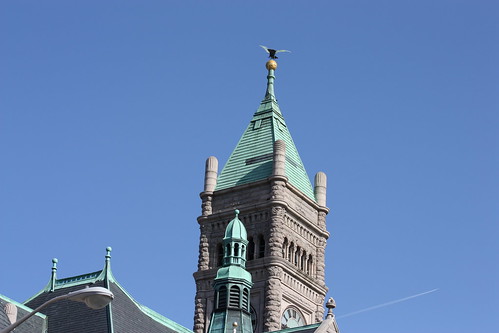Lowell City Council Meeting: August 23, 2016

Responses from City Manager
Re Multimodal Transportation Report, Councilor Belanger congratulates and thanks DPD for such an extensive report. He moves to refer the report to the council’s Transportation Subcommittee. Motion passes.
Re Vehicles registered out of state which appear to be operated by Lowell residents. Chief Taylor says most cases come from citizen complaints, but state law requires the out of state car to be observed for 30 days. If the police are able to document that, they can apply for a complaint from the Lowell District Court. The maximum punishment is $500. Councilor Leahy mentions that at neighborhood meetings, councilors get complaints about “low riders” and “tinted glass.” Taylor says they’ve previously provided a report that addresses those things. He adds that the most frequent complaints the police receive while attending community meetings involve traffic and parking.
Public Hearing on proposed ordinance re manufactured homes. Passes.
Communication: Reappoint Thomas O’Brien and Beverly Anthes to Election Commission. Reappointed unanimously.
Vote: Accept gift of 2016 Chevy Van from Friends of Council on Aging
Vote: Execute temporary construction easements with Commonwealth for construction of Lowell Judicial Center
Subcommittee Report: Economic Development Subcommittee which met tonight. First part of meeting was a presentation by Paul Marion and Fred Faust on the Lowell Canal Vitality Project. September 1, 2016, will be the final First Thursday of 2016. It will include a lighting demonstration that will light up some of the canals and many downtown buildings.
The subcommittee received a second presentation from representatives from Cross Point and Kronos. They spent $65mil in improvements and $10mil in what they called “campus design” which is essential to the modern workplace with included amenities like restaurants, day care, gym, more grass and walking areas.
Motions:
By Councilor Leahy, request city manager have Inspectional Services review permitting fees to ensure they are comparable to surrounding communities. Passes.
By Councilor Leary, request report on the new firearms licensing policy. Passes.
By Councilor Leary, assess vacant property vicinity of 110 and 119 Chelmsford Street for trash cleanup. Passes.
Meeting adjourns at 742pm.
(Next council meeting on September 13, 2016)
The ordinance on “manufactured homes” was very unfortunate; a person replaced a destroyed house and the neighbors did not like the look of the new home.
Not only did the neighborhood single out that person, but the city council did too and they went as far as to ask to remove the person’s house (despite it being built properly and adhering to all building codes and ordinances).
It is a very sad state when a person’s home is threatened because people do not like the look of it.
The end result was an ordinance amendment that restricts how houses are constructed in the city; only structures built on-site are allowed now. On the one hand it is a token to calm down the PCC, on the other hand which leaves the city open to a lawsuit because it serves absolutely no purpose for safety, zoning, etc.
I’ve seen a similar pattern and it makes me sad; neighbors will fight tooth-and-nail when someone paints a house a color they do not like. This in-turn puts neighbors at odds so that when real problems do arise (such as neighborhood crime) they are unable to work together to solve the real problems.
The root of such evil is the “their style affects my property value” argument. The key is that neighbors fighting (making a neighborhood not feel welcome, not being able to work together to solve issues, etc) affects “property value” much more then anyone’s style ever could.
For example, if a neighborhood is not welcoming a owner is far more likely to move out and rent out their property to someone who is less invested in the neighborhood. This affects “property value” much more then a paint color.
As another example, if there is a shooting in the neighborhood and everyone hates each other because they had fought over house style in years past. Thus they will be unable to form a neighborhood watch to fight the crime. The inability to work together to solve problems hurts “property value” the most.
As another example, if a young family moves in and does not have much money to start off with and as such may not have an “acceptable style” — is it better to make them feel unwelcome and drive them out or let them get their footing? Young families invested in a neighborhood affect “property value” the most in the long-term!
The next time someone does something to their house they do not like the “style” of it think which would hurt the neighborhood more — a house color or style, or in-fighting that divides the neighborhood, drives new families out and encourages people to turn their houses into rental units?
I personally take a different approach, I thoroughly believe that people can do what they want on their own property as long as it violates no laws and creates no safety hazards for others. Anything else, including color and style, is none of my business. It is cliche, but this is America.
Shame on the PCC for the pettiness and shame on select members of the City Council for amplifying it. On the other hand I applaud Shaun Shanahan; he was one of the few rational voices in all of this (namely the building met all ordinances and code).